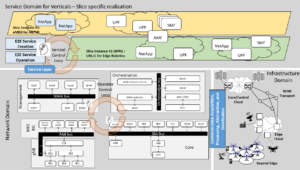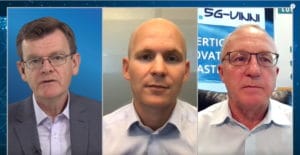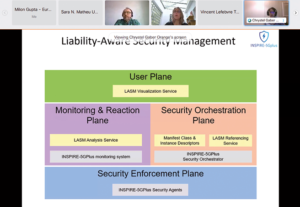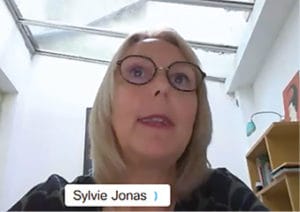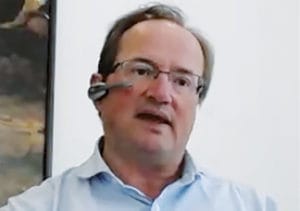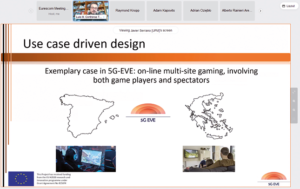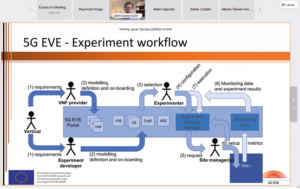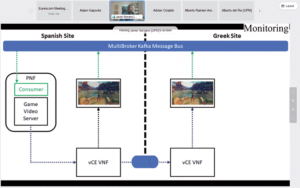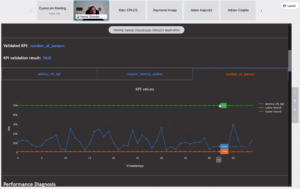5G-PPP participation at the world’s largest telecoms event
From 28 February to 3 March, MWC Barcelona, still commonly referred to as Mobile World Congress, attracted a large crowd of 10,700 industry experts to attend in person. After two years of Covid-19 restrictions this figure was still below pre-Covid levels. Yet, the event clearly indicated a return of the industry to something closer to normality, despite the Russian invasion of Ukraine, which started four days before MWC opened its doors. Among the booths in the exhibition and the presentations in the conference programme were also a number of 5G PPP projects, which presented their latest results.
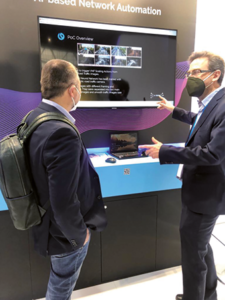
5G-TOURS results at the ATOS stand
One of the partners of the 5G-TOURS project is ATOS, who are leading the work package on use cases and requirements. As an active contributor to the network automation work within 5G-TOURS, ATOS has contributed both to the project use cases as well as external standards and open-source activities. At its own stand ATOS presented and demonstrated various research activities, including the 5G-TOURS activities around network automation based on AI.

Joint stand of 5G-TOURS, 5G-Heart and 5G-Solutions
5G-TOURS joined forces with two other 5G-PPP projects 5G-Heart and 5G-Solutions in order to have a stand in Hall 7. The experts at the stand answered the questions of numerous visitors and showed videos about the projects’ use cases, including 5G-TOURS from the three nodes in Turin (Italy), Rennes (France), and Athens (Greece).
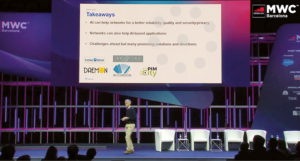
Presentation by Diego Perino, Director of Telefónica I+D
MWC presence of the DAEMON project
The DAEMON project on Network Intelligence for Adaptive and Self-learning Mobile Networks was present at MWC through fliers and brochures available at the stands of several project partners like i2CAT and Software Radio Systems. This material provided a thorough description of the context, vision and objectives of the project and was freely available to all attendees visiting the partners’ booths. The project was also featured in a looped video displayed on a monitor at the i2CAT stand.
In addition, research results from the DAEMON project were presented on stage by Diego Perino, Director of Telefónica I+D. In his talk about the impact and benefits of integrating AI in future-generation mobile networks, he explicitly acknowledged the contribution by DAEMON.
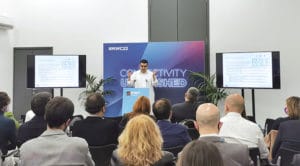
Special session of Catalonia Tourism Cluster
5G-TOURS was invited to a special session of the Catalonia ICT Tourism Cluster. In addition to other projects and local contributors from Catalonia, 5G-TOURS technical manager Belkacem Mouhouche presented the tourism node of the project and explained how the 5G-TOURS use cases developed in Turin will help tourists and citizens enjoy museums and touristic places better, especially in the COVID era.
Conclusion
Mobile World Congress provided the opportunity for a few 5G-PPP projects to disseminate their results in person instead of online, as it had become usual in over two years of the Covid-19 pandemic. In this respect, the stands at MWC where very useful to make people aware of the 5G-PPP project activities. Presentations on stage and in special sessions added to the achieved impact.
Further information
- MWC post-event report – https://assets.mwcbarcelona.com/Content/MWC-Barcelona-2022_Event-Report-1.pdf
- 5G-TOURS project website – https://5gtours.eu
- 5G-Heart project website – https://5gheart.org
- 5G-Solutions project website –https://5gsolutionsproject.eu
- DAEMON project website – https://h2020daemon.eu



